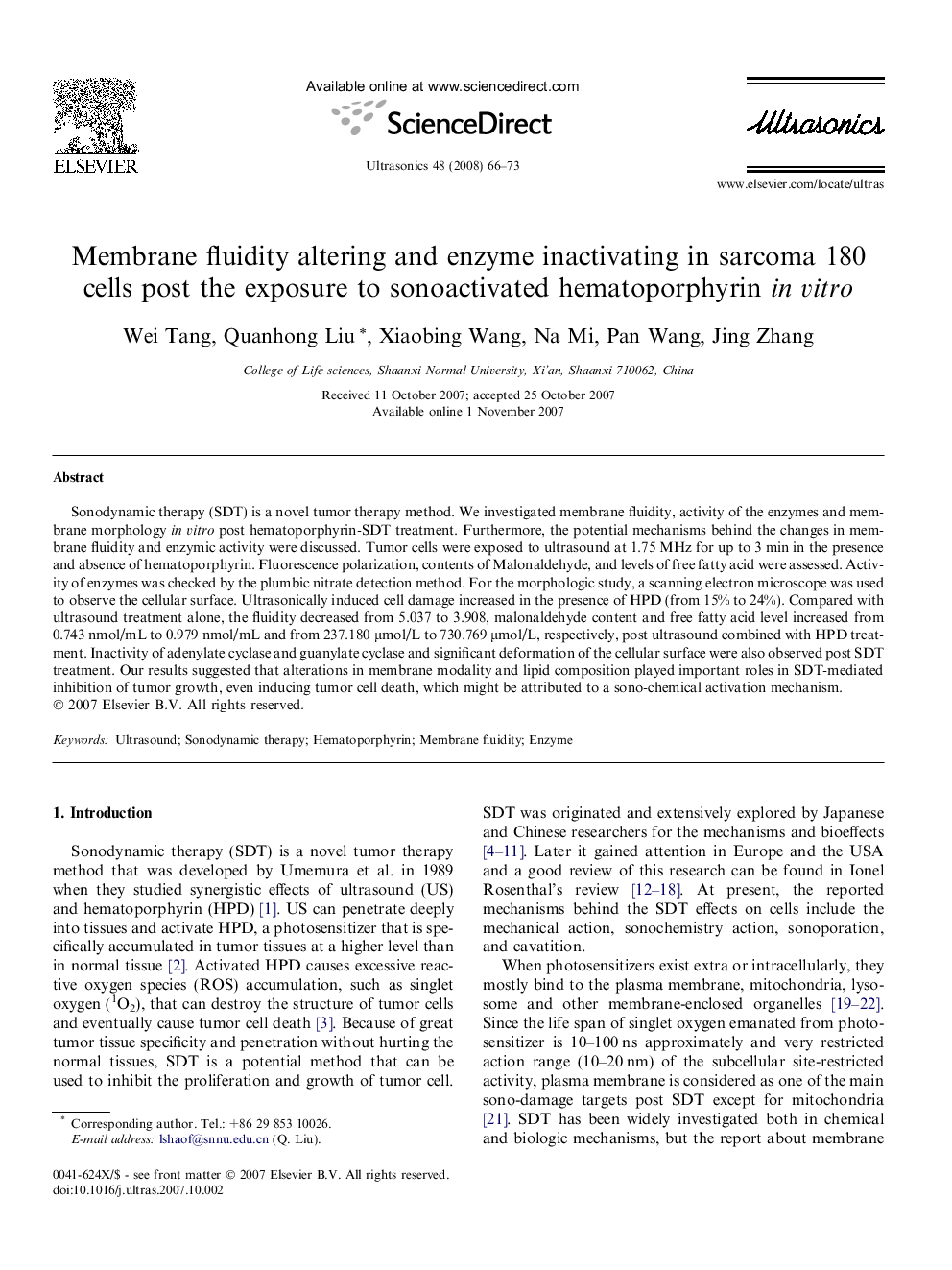| Article ID | Journal | Published Year | Pages | File Type |
|---|---|---|---|---|
| 1760055 | Ultrasonics | 2008 | 8 Pages |
Sonodynamic therapy (SDT) is a novel tumor therapy method. We investigated membrane fluidity, activity of the enzymes and membrane morphology in vitro post hematoporphyrin-SDT treatment. Furthermore, the potential mechanisms behind the changes in membrane fluidity and enzymic activity were discussed. Tumor cells were exposed to ultrasound at 1.75 MHz for up to 3 min in the presence and absence of hematoporphyrin. Fluorescence polarization, contents of Malonaldehyde, and levels of free fatty acid were assessed. Activity of enzymes was checked by the plumbic nitrate detection method. For the morphologic study, a scanning electron microscope was used to observe the cellular surface. Ultrasonically induced cell damage increased in the presence of HPD (from 15% to 24%). Compared with ultrasound treatment alone, the fluidity decreased from 5.037 to 3.908, malonaldehyde content and free fatty acid level increased from 0.743 nmol/mL to 0.979 nmol/mL and from 237.180 μmol/L to 730.769 μmol/L, respectively, post ultrasound combined with HPD treatment. Inactivity of adenylate cyclase and guanylate cyclase and significant deformation of the cellular surface were also observed post SDT treatment. Our results suggested that alterations in membrane modality and lipid composition played important roles in SDT-mediated inhibition of tumor growth, even inducing tumor cell death, which might be attributed to a sono-chemical activation mechanism.
